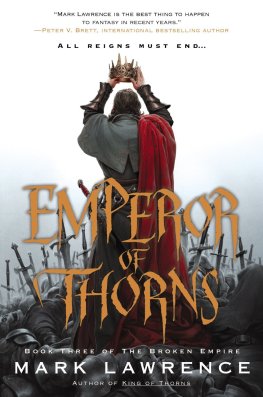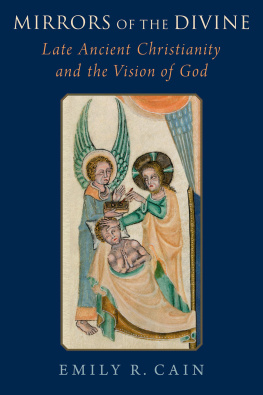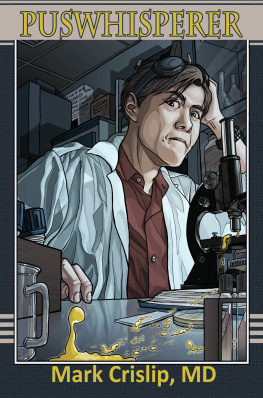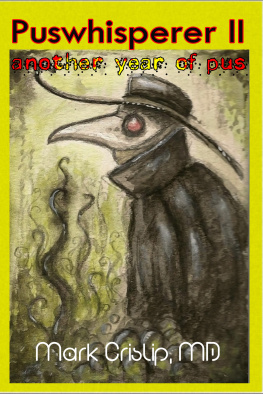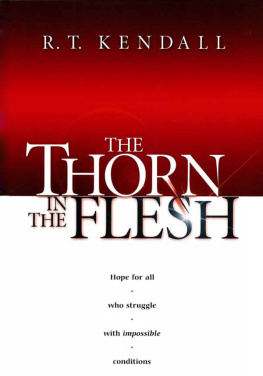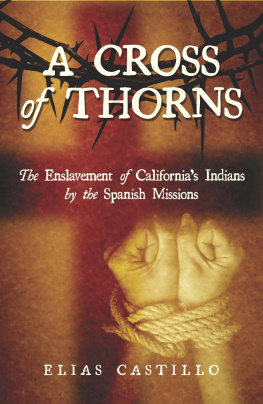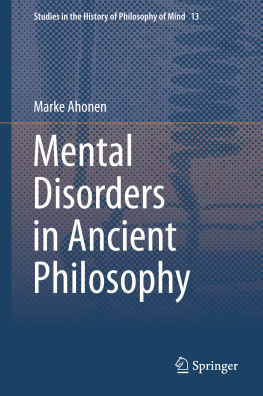Crislip - Thorns in the flesh illness and sanctity in late ancient Christianity
Here you can read online Crislip - Thorns in the flesh illness and sanctity in late ancient Christianity full text of the book (entire story) in english for free. Download pdf and epub, get meaning, cover and reviews about this ebook. City: Philadelphia, year: 2013, publisher: University of Pennsylvania Press, genre: Religion. Description of the work, (preface) as well as reviews are available. Best literature library LitArk.com created for fans of good reading and offers a wide selection of genres:
Romance novel
Science fiction
Adventure
Detective
Science
History
Home and family
Prose
Art
Politics
Computer
Non-fiction
Religion
Business
Children
Humor
Choose a favorite category and find really read worthwhile books. Enjoy immersion in the world of imagination, feel the emotions of the characters or learn something new for yourself, make an fascinating discovery.

- Book:Thorns in the flesh illness and sanctity in late ancient Christianity
- Author:
- Publisher:University of Pennsylvania Press
- Genre:
- Year:2013
- City:Philadelphia
- Rating:5 / 5
- Favourites:Add to favourites
- Your mark:
- 100
- 1
- 2
- 3
- 4
- 5
Thorns in the flesh illness and sanctity in late ancient Christianity: summary, description and annotation
We offer to read an annotation, description, summary or preface (depends on what the author of the book "Thorns in the flesh illness and sanctity in late ancient Christianity" wrote himself). If you haven't found the necessary information about the book — write in the comments, we will try to find it.
Crislip: author's other books
Who wrote Thorns in the flesh illness and sanctity in late ancient Christianity? Find out the surname, the name of the author of the book and a list of all author's works by series.
Thorns in the flesh illness and sanctity in late ancient Christianity — read online for free the complete book (whole text) full work
Below is the text of the book, divided by pages. System saving the place of the last page read, allows you to conveniently read the book "Thorns in the flesh illness and sanctity in late ancient Christianity" online for free, without having to search again every time where you left off. Put a bookmark, and you can go to the page where you finished reading at any time.
Font size:
Interval:
Bookmark:
Thorns in the Flesh
DIVINATIONS: REREADING LATE ANCIENT RELIGION
Series Editors: Daniel Boyarin, Virginia Burrus, Derek Krueger
A complete list of books in the series is available from the publisher.
Illness and Sanctity in Late Ancient Christianity
Andrew Crislip

Copyright 2013 University of Pennsylvania Press
All rights reserved. Except for brief quotations used for purposes of review or scholarly citation, none of this book may be reproduced in any form by any means without written permission from the publisher.
Published by
University of Pennsylvania Press
Philadelphia, Pennsylvania 19104-4112
www.upenn.edu/pennpress
Printed in the United States of America on acid-free paper
10 9 8 7 6 5 4 3 2 1
A Cataloging-in-Publication record is available from the Library of
Congress
ISBN 978-0-8122-4445-8
For Grace and Renna
The sick saint has long captured the western imagination. Take Anatole Frances 1890 novel Thas. Although France is no longer fashionable (and is hardly in print in English), from the fin de sicle to the 1920s France spoke of the mentality of the times. He was considered by many the greatest living author in 1924 (the year he won the Nobel Prize for literature) and praised by such still-revered authors as Edmund Wilson and Henry James.
Frances adaptation of the prophet Isaiah evokes the image of the desert as body, erupting with the bloom of diseased ascetics, much as each ascetics body is adorned by the efflorescence of disease. France places the cultivation of illness at the heart of the nascent monastic movement, a distinctive feature of the exotic world of late ancient Egyptian asceticism. While Athanasius of Alexandria in his Life of Antony famously characterized the same period of monasticisms birth as a desert transformed into a city of health, led by Antony as a physician (iatros) for Egypt, in Anatole Frances version the desert becomes a garden of disease.
A generation later than France in his native Romania, E. M. Cioran too identified illness as central to the Christian ascetic project, drawing on the lives of the saints he had read as a child and the writings of Friedrich Nietzsche, whose Genealogy of Morals is suffused with images of disease, sickness, For both France and Cioran, ascetics willingly acceptand even courtdiseases embrace as a form of ascetic practice and self-transformation.
Such a characterization of early Christian asceticism is echoed among later critics and historians, as it certainly is in numerous early Christian texts. The Syriac poet Jacob of Serug (c. 451521) turns rot into an object of aesthetic (and ascetic) transcendence, comparing the stylite Simeons rotting, gangrenous foot to a tree, beautiful with branches.
Such characterizations make meaning of the illness of saints or ascetics by reading it within the symbolic matrix of Christian salvation history and myth. The anthropologist and psychiatrist Arthur Kleinman notes that cultures make meaning out of illness by interpreting the signs of disease not justor even primarilyon the plane of diagnostic nosology but within the matrix of shared symbols, principally of religious myth and ideology, forming a cultural meaning of illness that can exist independently of any professionalized medical diagnosis.
The symbolic world in question is a familiar one, shared in some measure by the modern writers just cited and the ancient ones who will be the focus of this book. In the early Christian tradition illness, bodily decline and decay, and pain, as Elaine Scarry and Teresa Shaw have variously argued, were understood as direct consequences of the first humans ejection from Eden and gods curse upon the pair and their descendants.
At the end of his 930 years Adam announces that he is sick, leaving his children bewildered, as they have never witnessed illness before. Seth then asks one of the most basic existential questions about being human: What is pain and illness (ti estin ponos kai nosos)?
The popular Life of Adam and Eve thus elaborates on the curse implied in the biblical account. Disease and decrepitude are neither natural components of the human body nor diabolical ruses by jealous gods unleashed on humanity (as in Hesiods version of the Pandoras jar myth) but just punishment for humanitys sins, punishment that must be paid out throughout the generations, forever. Illness is the most visceral sign of humanitys fallenness.
The Life of Adam and Eve represents a distinctive emphasis on the part of early Christians, who interpreted illness not simply on the plane of physiology
Within the symbolic matrix of a fall into decrepitude and disease followed by the present, anticipatory state of convalescence, illness (and its absence) among asceticsthe focus of this bookcould be read in a number of ways. As will be discussed in more detail in Throughout, the saints status as symbol and moral exemplar renders his or her health or illness especially meaningful within the symbolic matrix of late ancient Christianity.
But clearly the ascetic reclamation of primordial health is not at work in
Modernists such as Cioran and France and contemporary theorists such as Harpham reflect a notable trend in early Christian approaches to illness in ascetic practice when they point to the embrace of illness and suffering among the saints, their delight in debility, and the desirability of their disfigurement, as do those who note the paradisiacal, restorative rhetoric of late ancient ascetic discourse. But it would be a mistake to take such generalizations as normative, or even typical, of late ancient mentalities. Rather, these two traditions of making meaning out of illness persist in dialectic and tension. Health is the clearest signifier of the reclamation of paradisiacal wholeness, a garden home of the saint. At the same time illness is the great source of glory for the Christian, nothing short of a martyrdom, at the hands not of empire but of nature.
Ascetics and their followers thus made meaning of illness among the saints within the ambiguous territory of early Christian attitudes toward illness. For all the resonance of Frances ulcered ascetics or Harphams disfigured holy men, the sick ascetic did not presage any such stable meaning, whether reflected through saints lives, rules, treatises, or letters, public or personal. Illness posed special difficulties for late ancient monks in interpretation and regulation; the following chapters will show that monastic writers read illness in a number of ways, denying any special meaning for monastic illness as well as elevating the health or illness of the monk as a most telling signifier of sanctity. Even among those who saw illness among monks as especially meaningful, monastic authors disagreed sharply over how to make meaning out of it. The following chapters contain an exploration of how late ancients used illness in constructing Christian asceticism and ascetic theology. Late ancient Christians presented asceticism as the cure of humanitys endemic illness and illness as asceticisms apogee, the most effective mode self-mortification. Health became one of the most telling features of monastic hagiography, and in return hagiographers resorted to constructing apologia for monastic illness. Illness points to ambiguities of embodiment: it threatens the ascetics practice, yet could serve as the model and mode of ascetic transcendence and self-fashioning. Through the diverse perspectives from late antiquity discussed here, I hope to demonstrate that the early Christian ascetics understood the experience of illness as a profoundly problematic one, much like other areas of bodily practice, sex and eating most notably. The sustained debate over the practical, ascetical, and theological meaning of the illness experience opened up new ways for Christians to understand the self, the body, and ascetic practice.
Next pageFont size:
Interval:
Bookmark:
Similar books «Thorns in the flesh illness and sanctity in late ancient Christianity»
Look at similar books to Thorns in the flesh illness and sanctity in late ancient Christianity. We have selected literature similar in name and meaning in the hope of providing readers with more options to find new, interesting, not yet read works.
Discussion, reviews of the book Thorns in the flesh illness and sanctity in late ancient Christianity and just readers' own opinions. Leave your comments, write what you think about the work, its meaning or the main characters. Specify what exactly you liked and what you didn't like, and why you think so.

